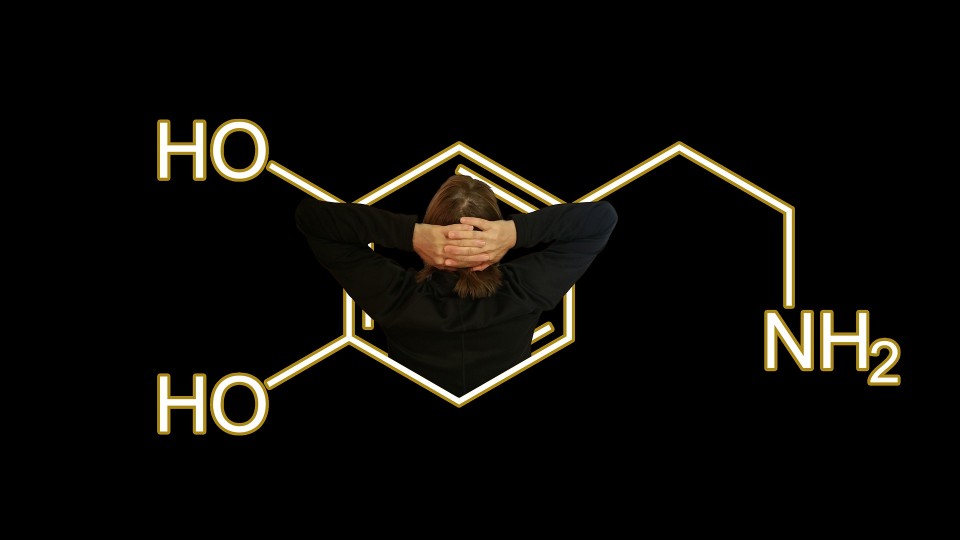The Brain’s Reward circuit
Five buck says:
You woke up with your phone next to you this morning!
What is the first thought that comes to your mind when you wake up?
For many of us, it is as simple as: “Hmm…. Lemme see if I received any messages.” Then they pull out their cellphones from the charger next to the bed and with half-open eyes, check their screens. That is the first thing they do. You don’t, do you?
Studies show that our phones are our best friends today.
That one share, a few likes or just one poke from a special someone; the feeling of being validated; the trauma of being unfriended, and the comfort of being connected to this virtual world is much stronger than we can imagine! It releases a chemical called Dopamine in our system. Let us see what this does to us.
The addiction to Dopamine
Dopamine is a neurotransmitter that floods the brain’s reward circuit!
It produces euphoric feelings; like a child who receives a long-awaited reward.
Additionally, it activates our memory centre to remember this pleasant feeling. As it fades away, it leaves you miserable and creates a longing for more.

Dopamine is the same drug which is released by alcohol, gambling, weed and sex. In small doses, it is a beautiful drug. It helps us feel a sense of achievement, a feeling of blissful joy which makes us human, helps us strive for our goals.
Wherever you are, and whatever you do, you know that you have experienced this feeling!
Here’s the catch.
Alcohol is not bad; too much of it is terrible. Gambling is fun; too much gambling is a disaster! Like any other addiction, when we get too much dopamine before we know it, we are hooked on it! Just like an alcoholic or a drug addict, we cannot do without our phones for even one minute. You know what I’m talking about, you have seen that guy in a meeting with his phone hidden in his lap, face-up, and you have seen him peeking into it off and on, haven’t you?
Now, whether this is good or bad can be left for a different discussion. Instead, let us see if we can bring out something which benefits us from all this.
Onboard Discipline and Modern-day sailors
Make no mistake. It’s the Master’s wheelhouse!
There are specific protocols to be followed if you are a sailor. The ship is not a democracy, and that must be very clear! The one thing more critical than competence is discipline! Discipline is paramount!
We know that we cannot allow the modern-day sailors to use their cell phones during work times, or in meetings for that matter. That said, however, does it mean we cannot use it to our advantage at all?
We work with what we have, isn’t it? Isn’t that what we have always done as seafarers?
Dopamine to facilitate Maritime Training: A Win-Win solution

According to Simon Sinek and several research papers, 96% of the young generation seafarers use mobile devices or other gadgets during their free time. Even on ships without the internet, you cannot deny the screen addiction.
You see it every day.
In 2014, the world saw a change where the mobile-only internet users surpassed the desktop-only group. The younger the mind, the more portable it wants access to be.
Here are a few things we can do to make this addiction work for their benefit:
Three approaches that work
As we, at Navguide Solutions, spent the last couple of years designing Maritime Training in a way that gels with the young mind, we identified a few things. Here are three distinct solutions we have used with incredible results.
1. Create your training for all portable devices
Any training material suited for a mobile device creates a subconscious connection; it is one up on the acceptability scale already.
If you want to learn about a specific aspect of your job, would you rather go to a friend who is an authority on the subject, or someone you barely know? Most of the time, we will ask our friend first. If I can learn from someone I am comfortable with, that’s cool, right?
Believe it or not, for many youngsters, their mobile devices are the only friend they want to learn from! They have grown up with it; they wake up with it, they sleep with it! When they felt bad, they went to it, and when they felt good, they called their friends using it! Do you see where I am going with this?
Anything that comes out of that device automatically bears a subconscious stamp of being acceptable! Give them something they love anyway, and it will work with the least resistance!
2. Use video content smartly
YouTube is the second-largest search engine in the world. Think about that for a moment. Who do you think are most addicted? Young millennials!

There’s more.
YouTube released its statistics saying that more than half the searches today start with a ‘how-to’. If you wanted to make a sandwich today, is it simpler to buy a cookbook or to watch a two-minute YouTube video?
You now have a video covering practically everything. Learning from the internet is a very legitimate way to learn a skill-set. Our youngsters know that only too well!
But We do have Safety videos, right?
Well, there are a few massive drawbacks to the videos we have on board! While videos have been there as part of Maritime Training, we could never imagine videos on board to be a legitimate and official means of improving the quality and competency of modern-day sailors. Ask anyone at sea how much they “love” watching safety videos!
The key phrase here is that ‘we show them’.
They are not seen, they have to be shown.
They are lengthy and they not portable! They are not on their mobile devices!!! Think of how much attention span they have! Those facts create a subconscious resistance in the young minds, even though they may have great content, it feels like a job to watch them!
It’s not only about the content, but it’s also about the context!
Companies spend millions of dollars on developing their maritime training courses with the best of intentions. Slight tweaks would change the game completely.
3. Engage them. Give them something to do.
Almost every maritime training course we have done came with a test. So, we do have a lot to do! Yet, they never felt interesting. They felt like a job!
Why? Think about it.
There is one question with five options. One of them is correct, and the system knows which one!
This is the typical authoritarian approach of education, and it dates back a few hundred years. As we will see in a later blog, for a very valid reason, it made sense to the earlier generations, but when you grow up knowing that you can have an answer to any question, the authoritative approach does not attract you at all.
You do it because it’s a job! Because your company is asking you to!
An alternative suggestion to designing Maritime Training
Imagine if we can develop interactive games for them.
Games which they have to be physically involved in, to see, do and work on. Imagine a game where they have to take rounds on deck or Engine room if they have to play it. It is much more labour intensive than answering questions in front of a computer, and yet is more enticing to a young seafarer!
It will involve them in a way they love. That in itself boosts creativity and learning speed. It conveys this message –
“If you know your stuff, I will help you know it better. If you don’t, I will show you.”
Do you see the difference here?
If you check our company profile you will find out how exactly we designed such games and how this approach to maritime training can be way more beneficial than any conventional method.
Association of Dopamine
Let me elaborate a bit on the scientific reason why these approaches are practical.
The famous 1927 study by Russian physiologist Ivan Pavlov on Classical conditioning demonstrated something peculiar and interesting. Classical conditioning means that a specific stimulus causes an appropriate response. For instance, if you see food (a stimulus), you will salivate (a response). You didn’t need a psychologist to tell you that! Salvation at the sight of food is an unconditioned response.

Now he took it one step further. In one of Pavlov’s experiments, he rang a bell every time he fed some dogs.
Unlike food, which is an unconditioned stimulus, the bell became a conditioned stimulus. This is because the dogs learned (they were conditioned) that when the bell rang, food would arrive. Pavlov formed a paired association between an unconditioned stimulus (dog food) and a conditioned stimulus (a bell). The dogs had been conditioned that the bell meant food is on its way. They learned! Eventually, both the food and the bell elicited the same response, i.e. salivation.
The same study applies to all of us.
The mobile phone is subconsciously associated with a release of Dopamine for many of us, especially in the younger generation. Dopamine being addictive, we feel like going back to our phones, and anything that comes out of it often seems exciting and acceptable.
Do you see the tremendous potential in this concept to transform the youngsters using the right technology the right way?
Brainstorm
Give us a good idea which you think will make the younger generation more interested to learn their jobs. Leave it on the comments below. Please do not be restricted to conventional methods which we know, think out of the box!
Let us know what you felt.






